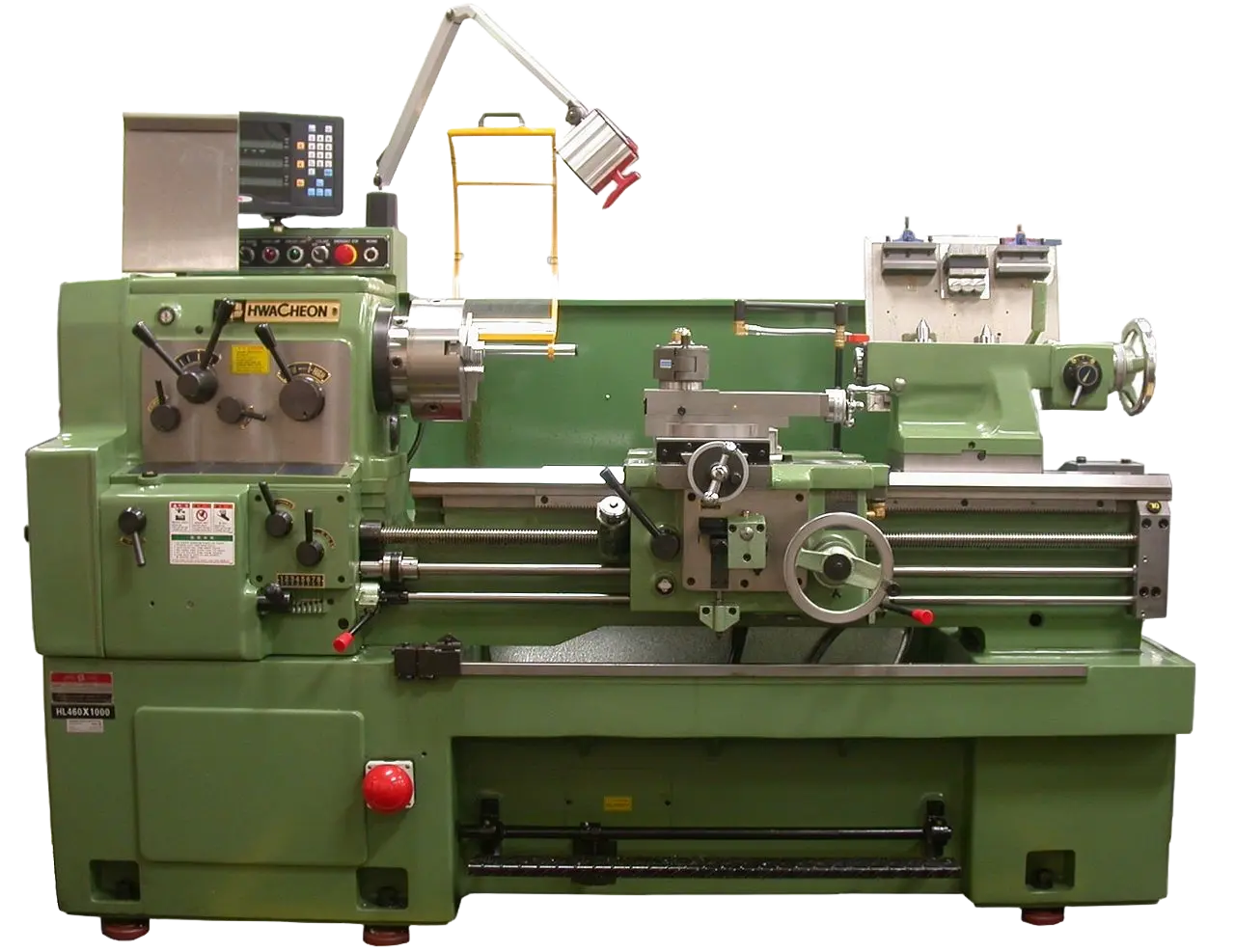Discover the Art of Lathe Machining
Explore the precision and versatility of lathe operations in modern manufacturing.
Start Learning
Essential Lathe Operations
View All Operations→Facing
Creating a flat surface perpendicular to the workpiece axis.
Straight Turning
Reducing the diameter of a workpiece to a specified size.
Drilling
Creating holes using the tailstock
Boring
Enlarging and finishing holes
Threading
Cutting internal and external threads
Taper Turning
Creating conical surfaces
Expert Recommendations
Top picks from master machinists

John Smith
30 years experience
"For precision work, I always recommend starting with a rigid tool post setup. The QCTP (Quick Change Tool Post) from Aloris is worth every penny."

Maria Rodriguez
CNC Specialist
"Digital readouts are game-changers for manual lathes. They reduce errors and speed up production significantly."
Extraordinary Lathes
Rose Engine Lathe
A specialized ornamental lathe that creates intricate geometric patterns. Used in watchmaking and jewelry design.
Glass-Working Lathe
Used to shape hot glass tubes. Essential in neon sign making and scientific glassware production.
Oval Turning Lathe
A fascinating machine that can turn non-circular shapes. Popular in the 18th century for picture frames.
Frequently Asked Questions
Find quick answers to common questions about lathe operation
How do I properly set up a workpiece in the chuck?
Start by selecting the appropriate chuck jaws for your workpiece. Ensure the material is properly centered, extends no more than 3 times its diameter without support, and is firmly gripped. For longer pieces, use a tailstock or steady rest for additional support.
Read more→getting startedWhat are common mistakes beginners should avoid?
Common mistakes include incorrect speed and feed selection, poor tool height setting, inadequate workpiece support, and rushing through setup procedures. Taking time to properly plan and set up each operation is crucial for success.
Read more→operationsWhat type of coolant should I use?
Coolant choice depends on the material and operation. Water-soluble coolants are common for general purpose machining, while straight oils are better for threading and heavy-duty operations. Some materials like brass can often be machined dry.
Read more→Did You Know?
Fun Fact #1
The first lathe was invented over 3,000 years ago in ancient Egypt, using a bow to rotate the workpiece!
Fun Fact #2
The largest lathe ever built was used to machine nuclear submarine propeller shafts and could handle pieces up to 38 feet long.
Fun Fact #3
Leonardo da Vinci designed an early version of the ornamental lathe in the 15th century.
Fun Fact #4
Modern CNC lathes can achieve accuracy to within 0.0001 inches - that's thinner than a human hair!